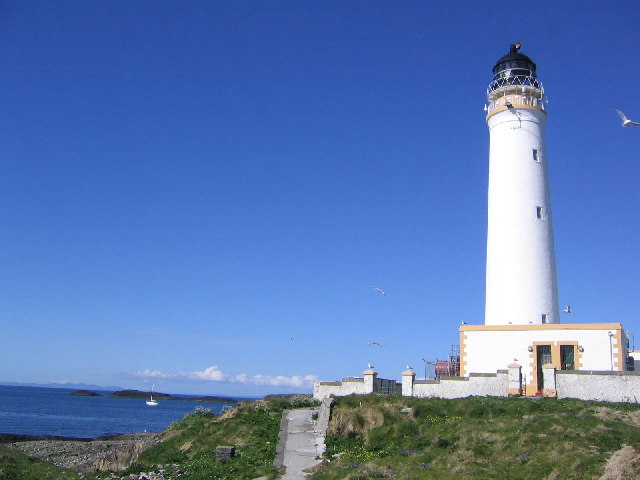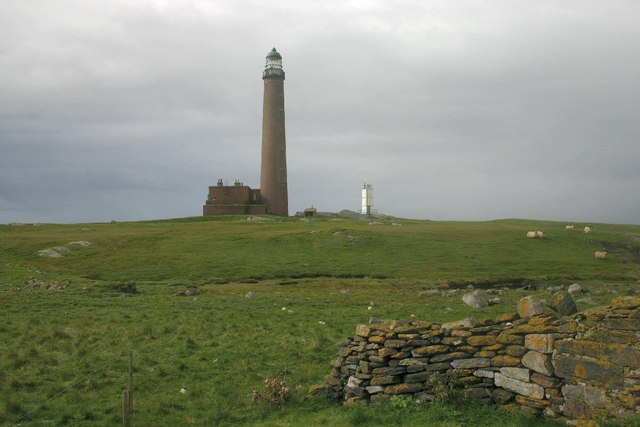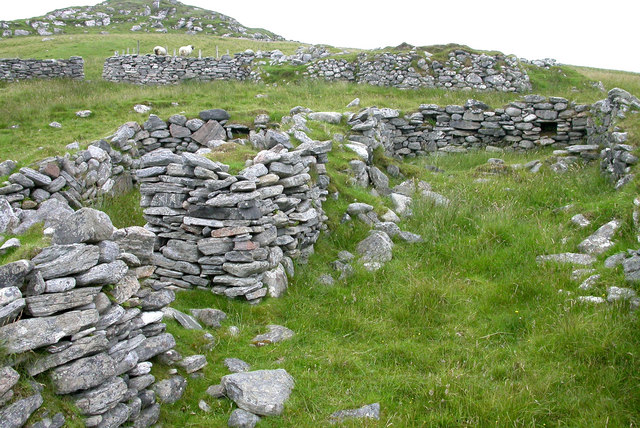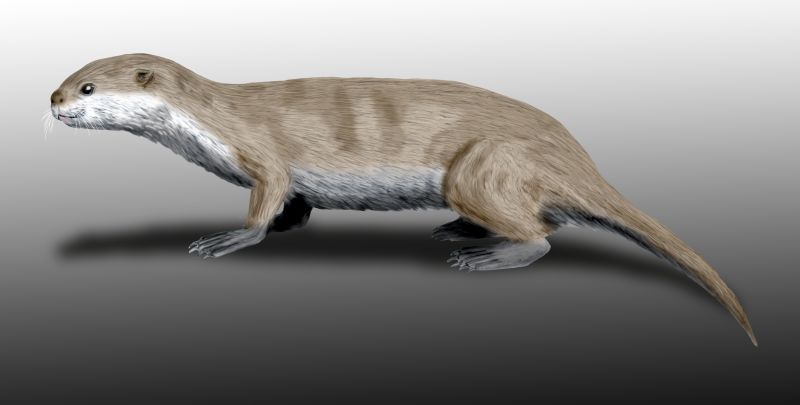|
Hyskeir
Hyskeir () or Heyskeir is a low-lying rocky islet (a skerry) in the Inner Hebrides, Scotland. The Hyskeir Lighthouse marks the southern entrance to the Minch. Geography Hyskeir lies in the southern entrance to the Minch, 10 kilometres southwest of the island of Canna and 14 kilometres west of Rùm. Garbh Sgeir is a rock that lies next to the islet and the landing place for Hyskeir lies in the channel between the two. Both islands are unoccupied. Òigh-sgeir is composed of hexagonal pitchstone columns. The owner of the island in the 19th and early 20th centuries was Philip Ollas. At that time sheep from Canna were brought to make use of the summer grazing. Etymology Hyskeir is from the Old Norse ''sker'' meaning skerry. ''Òigh-sgeir'' is Gaelic for 'maiden' or 'virgin rock', ''sgeir'' also meaning skerry. The English name 'Maiden Rock' has also been used. Lighthouse Hyskeir Lighthouse was established in 1904. The building marks the southern end of the Minch, warn ... [...More Info...] [...Related Items...] OR: [Wikipedia] [Google] [Baidu] |
Hyskeir Lighthouse
Hyskeir Lighthouse in Scotland was established in 1904. The lighthouse marks the southern end of The Minch, warning of the presence of the Mills Rocks, Canna, and Hyskeir itself. It was designed by David and Charles Stevenson and constructed by Oban contractor Messrs D & J MacDougall. The white tower was staffed until March 1997, becoming one of the last lighthouses in Scotland to be automated. The keepers were briefly known for their one-hole golf course following their appearance on TV. Now controlled by the Northern Lighthouse Board in Edinburgh, it displays three white flashes every thirty seconds. Hyskeir and its lighthouse feature extensively in Peter Hill's 2003 book '' Stargazing: Memoirs of a Young Lighthouse Keeper''. See also * List of lighthouses in Scotland * List of Northern Lighthouse Board lighthouses This is a list of the currently operational lighthouses of the Northern Lighthouse Board (NLB). The list is divided by geographical location, and then by wh ... [...More Info...] [...Related Items...] OR: [Wikipedia] [Google] [Baidu] |
Monach Islands
The Monach Islands, also known as Heisker ( / , ), are an island group west of North Uist in the Outer Hebrides of Scotland. The islands are not to be confused with Hyskeir in the Inner Hebrides, or Haskeir which is also off North Uist and visible from the group. Geology and geography The main islands of (once home to a nunnery), and Shivinish () are all linked at low tide. It has been claimed that it was at one time possible to walk all the way to Baleshare, and on to North Uist, five miles away at low tide. In the 17th century, a large tidal wave is said to have washed this route away. The islands of the group tend to be low-lying and sandy, subject to intense coastal erosion. Not unlike the Isles of Scilly it is possible that , Shivinish and formed a single body of land within historic times, and that their land area has greatly decreased due to overgrazing, sea inundation, and wind erosion. Smaller islands in the group include Deasker (), Shillay () and (or St ... [...More Info...] [...Related Items...] OR: [Wikipedia] [Google] [Baidu] |
The Minch
The Minch () is a strait in north-west Scotland that separates the mainland from Lewis and Harris in the Outer Hebrides. It was known as ("Scotland's firth") in Old Norse. The Minch's southern extension, which separates Skye from the middle islands of the Hebridean chain, is known as the Little Minch. It opens into the Sea of the Hebrides. Geography The Minch and Little Minch form part of the Inner Seas off the West Coast of Scotland, as defined by the International Hydrographic Organization. The Minch ranges from wide and is approximately long. It is believed to be the site of the biggest meteorite ever to hit the British Isles. The Little Minch is about wide. In June 2010 Eilidh Macdonald became the first person to swim across it from Waternish Point on Skye to Rodel on Harris, in a time of hours. Navigation A traffic separation scheme operates in the Little Minch, with northbound traffic proceeding close to Skye, and southbound close to Harris. Commercial ... [...More Info...] [...Related Items...] OR: [Wikipedia] [Google] [Baidu] |
Charles Alexander Stevenson
Charles Alexander Stevenson MICE MIEE FRSE (23 December 1855, – 9 May 1950) was a Scottish lighthouse engineer who built twenty-three lighthouses in and around Scotland. Life He was born at 8 Forth Street in the east part of Edinburgh's New Town The family moved to 20 Royal Terrace on Calton Hill shortly after his birth. Born into the famous Stevenson family of lighthouse engineers, son of David Stevenson and his wife Elizabeth Mackay, brother of David Alan Stevenson, and nephew of Thomas Stevenson, he was educated at Edinburgh Academy 1866 to 1872 then studied mathematics and engineering at the University of Edinburgh where he graduated BSc. He joined the family business of lighthouse design in 1875 remaining unpaid as a family member until 1887 when his uncle, Thomas Stevenson died, after which he became a partner. Between 1887 and 1937 he built 23 lighthouses with his brother, David, and is noted for his experiments with optics. He also improved foghorns and created h ... [...More Info...] [...Related Items...] OR: [Wikipedia] [Google] [Baidu] |
Haskeir
Haskeir (), also known as Great Haskeir () is a remote, exposed and uninhabited island in the Outer Hebrides of Scotland. It lies west-northwest of North Uist. southwest lie the skerries of Haskeir Eagach, made up of a colonnade of five rock stacks, and northwest is St Kilda. Geography, geology and botany There is no anchorage or shelter and access via the steep rocky cliffs may be difficult, even in calm conditions. There are several natural rock arches and a high cliff on the northern end of the island called ''Castle Cliff''. Various small skerries lie immediately to the north and south. There is very little vegetation save for a few sea-pinks, campion, plantain and orache that can survive the salt spray. Much of the bedrock is Lewisian gneiss History ''Skilðar'' or ''Skilðir'' (meaning shields) may have been the Old Norse name for Haskeir.Maclean, Charles (1977) ''Island on the Edge of the World: the Story of St. Kilda'' Canongate. . Page 33.Fleming, Andrew (2005) ' ... [...More Info...] [...Related Items...] OR: [Wikipedia] [Google] [Baidu] |
Canna, Scotland
Canna (; ) is the westernmost of the Small Isles archipelago, in the Scottish Inner Hebrides. It is linked to the neighbouring island of Sanday by a road and sandbanks at low tide. The island is long and wide. The isolated skerries of Hyskeir and Humla lie south-west of the island. The islands were left to the National Trust for Scotland by their previous owners, the highly important Celtic studies scholars John Lorne Campbell and Margaret Fay Shaw, in 1981, and are run as a farm and conservation area. Canna House, one of two big houses on the island (the other being Tighard), contains Shaw and Campbell's important archives of Scottish Gaelic literature, folklore, and folk song materials that were donated with the islands to the nation. Since then the National Trust has engaged in new initiatives to attract new residents and visitors to Canna. However, these initiatives have enjoyed only limited success, and in December 2017 it was announced that the trust would be d ... [...More Info...] [...Related Items...] OR: [Wikipedia] [Google] [Baidu] |
David Alan Stevenson
David Alan Stevenson (21 July 1854 in Edinburgh – 11 April 1938) was a lighthouse engineer who built 26 lighthouses in and around Scotland. Life He was born on 21 July 1854 the son of David Stevenson and his wife, Elizabeth Mackay. His early years were spent at their home at 8 Forth Street in the eastern section of the New Town in Edinburgh. The family later moved to 45 Melville Street. He was part of the famous Stevenson family of lighthouse engineers, including brother Charles Stevenson, uncle Thomas Stevenson, and grandfather Robert Stevenson. His cousin was the author Robert Louis Stevenson. Stevenson was educated at Edinburgh Academy (1865–70) and then studied Engineering at the University of Edinburgh, graduating BSc in 1875. In 1884 he was elected a Fellow of the Royal Society of Edinburgh. His proposers were William Swan, Peter Guthrie Tait, Robert MacKay Smith and George Chrystal.). Stevenson died at his home, "Troqueer", in the Kingsknowe area of Edinburg ... [...More Info...] [...Related Items...] OR: [Wikipedia] [Google] [Baidu] |
Scotland
Scotland is a Countries of the United Kingdom, country that is part of the United Kingdom. It contains nearly one-third of the United Kingdom's land area, consisting of the northern part of the island of Great Britain and more than 790 adjacent Islands of Scotland, islands, principally in the archipelagos of the Hebrides and the Northern Isles. To the south-east, Scotland has its Anglo-Scottish border, only land border, which is long and shared with England; the country is surrounded by the Atlantic Ocean to the north and west, the North Sea to the north-east and east, and the Irish Sea to the south. The population in 2022 was 5,439,842. Edinburgh is the capital and Glasgow is the most populous of the cities of Scotland. The Kingdom of Scotland emerged as an independent sovereign state in the 9th century. In 1603, James VI succeeded to the thrones of Kingdom of England, England and Kingdom of Ireland, Ireland, forming a personal union of the Union of the Crowns, three kingdo ... [...More Info...] [...Related Items...] OR: [Wikipedia] [Google] [Baidu] |
Television
Television (TV) is a telecommunication medium for transmitting moving images and sound. Additionally, the term can refer to a physical television set rather than the medium of transmission. Television is a mass medium for advertising, entertainment, news, and sports. The medium is capable of more than "radio broadcasting", which refers to an audio signal sent to radio receivers. Television became available in crude experimental forms in the 1920s, but only after several years of further development was the new technology marketed to consumers. After World War II, an improved form of black-and-white television broadcasting became popular in the United Kingdom and the United States, and television sets became commonplace in homes, businesses, and institutions. During the 1950s, television was the primary medium for influencing public opinion.Diggs-Brown, Barbara (2011''Strategic Public Relations: Audience Focused Practice''p. 48 In the mid-1960s, color broadcasting was ... [...More Info...] [...Related Items...] OR: [Wikipedia] [Google] [Baidu] |
Skerries Of Scotland
A skerry is a small rocky island, usually defined to be too small for habitation. Skerry, skerries, or The Skerries may also refer to: Geography Northern Ireland * Skerries, County Armagh, a townland in County Armagh * Skerry, County Antrim, a parish in County Antrim *The Skerries, Northern Ireland Republic of Ireland *Skerries, Dublin, a seaside town in Fingal, County Dublin ** Skerries railway station * Skerries, County Kildare, a townland in County Kildare Russia * Minina Skerries *The area surrounding Taymyr Island * Sumsky Skerries Scotland *Sule Skerry *Skerryvore *A number of locations in the Orkney Islands ** Auskerry ** Pentland Skerries *A number of locations in the Shetland Islands **Out Skerries **Gaut Skerries, in the Ramna Stacks **Ve Skerries South Georgia * Skrap Skerries United States * Skerry, New York Wales *The Skerries, Isle of Anglesey Australia * The Skerries (Victoria) Literature and music *Skerry, a fictional mammal in Neal Stephenson's nov ... [...More Info...] [...Related Items...] OR: [Wikipedia] [Google] [Baidu] |
List Of Islands Of Scotland
This is a list of islands of Scotland, the mainland of which is part of the island of Great Britain. Also included are various other related tables and lists. The definition of an offshore island used in this list is "land that is surrounded by seawater on a daily basis, but not necessarily at all stages of the tide, excluding human devices such as bridges and causeways". Scotland has around 900 offshore islands, most of which are to be found in four main groups: Shetland Islands, Shetland, Orkney Islands, Orkney, and the Hebrides, sub-divided into the Inner Hebrides and Outer Hebrides. There are also clusters of islands in the Firth of Clyde, Firth of Forth, and Solway Firth, and numerous small islands within the many bodies of fresh water in Scotland including Loch Lomond and Loch Maree. The largest island is Lewis and Harris, which extends to , and there are a further 200 islands which are greater than in area. Of the remainder, several, such as Staffa and the Flannan Isles, ... [...More Info...] [...Related Items...] OR: [Wikipedia] [Google] [Baidu] |
Pinniped
Pinnipeds (pronounced ), commonly known as seals, are a widely range (biology), distributed and diverse clade of carnivorous, fin-footed, semiaquatic, mostly marine mammals. They comprise the extant taxon, extant families Odobenidae (whose only living member is the walrus), Otariidae (the eared seals: sea lions and fur seals), and Phocidae (the earless seals, or true seals), with 34 extant species and more than 50 extinct species described from fossils. While seals were historically thought to have descended from two ancestral lines, molecular phylogenetics, molecular evidence supports them as a monophyletic group (descended from one ancestor). Pinnipeds belong to the suborder Caniformia of the order Carnivora; their closest living relatives are musteloids (Mustelidae, weasels, Procyonidae, raccoons, skunks and red pandas), having diverged about 50 million years ago. Seals range in size from the and Baikal seal to the and southern elephant seal. Several species exhibit ... [...More Info...] [...Related Items...] OR: [Wikipedia] [Google] [Baidu] |







